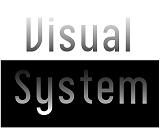Enterprise agreement level A, B, C, and D are terms used in contract negotiations between large organizations and their employees. These levels determine the compensation and benefits that employees receive based on their job titles and responsibilities. In this article, we will take a closer look at what each level means and how it affects employees.
Level A
Level A is the highest level of enterprise agreement, typically reserved for top executives and senior management. These employees receive the most competitive salaries, bonuses, and benefits, including stock options and profit-sharing plans. They are also eligible for the most generous retirement plans and health insurance coverage. These individuals are responsible for making key decisions and driving the success of the organization.
Level B
Level B is the next highest level, which includes mid-level management and experienced professionals. These employees may not have as much authority as those on Level A, but they are still critical to the organization`s success. They receive competitive salaries and benefits, including retirement plans and health insurance, but may not be eligible for the same level of bonuses or profit-sharing plans.
Level C
Level C includes entry-level professionals and technicians who have graduated from a formal training program. These employees receive a base salary and may be eligible for bonuses based on their performance. They may also receive health insurance and retirement benefits, but these may be less generous than the benefits offered to those on Level A and B.
Level D
Level D includes roles that require little or no formal training, such as administrative or support staff. These employees typically receive an hourly wage with limited benefits, such as health insurance and vacation time. They are not eligible for bonuses or profit-sharing plans and may not have access to retirement plans.
In conclusion, enterprise agreement levels A, B, C, and D determine the compensation and benefits that employees receive based on their job titles and responsibilities. As an employee, it is essential to understand which level you fall under and what benefits you are entitled to receive. Employers should also ensure that they are providing fair and competitive compensation to their employees to attract and retain top talent.
